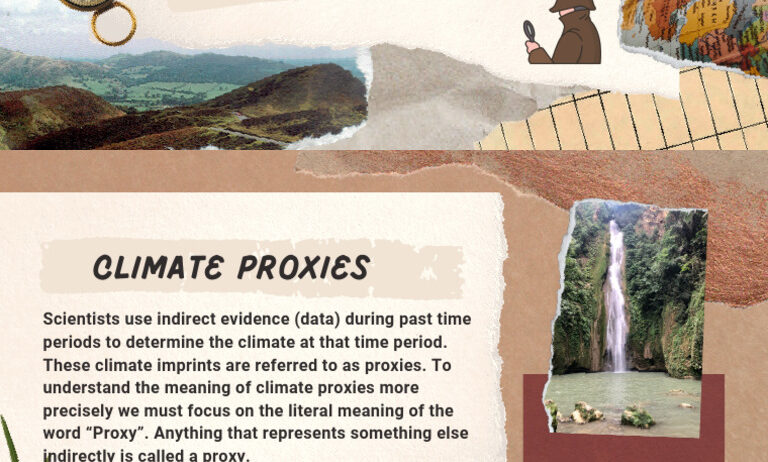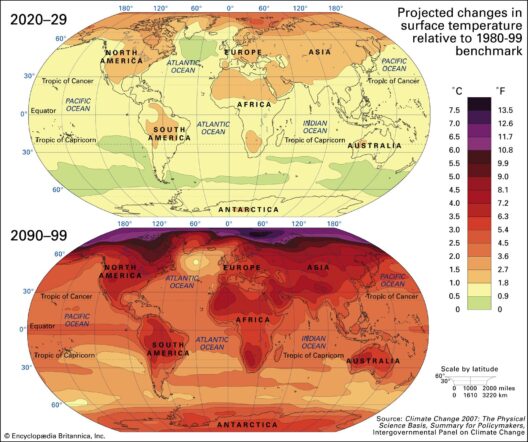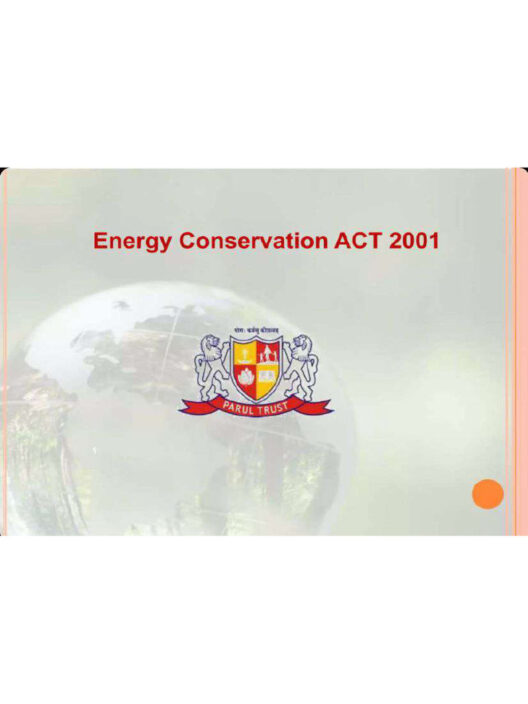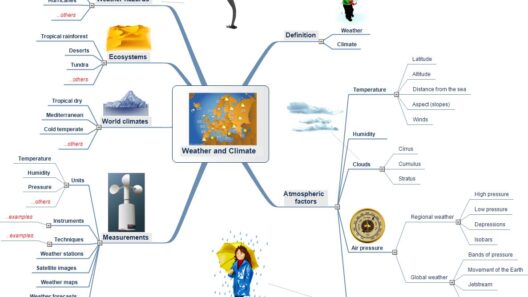Understanding climate proxies is akin to reading an intricately woven tapestry, where each thread carries the essence of time and nature’s narrative. Climate proxies are natural records that provide invaluable insights into Earth’s climatic history, acting as monumental markers that chart the planet’s evolution through eons. They serve as vital tools in piecing together the past, allowing scientists to analyze the myriad of climatic oscillations long before the advent of modern instrumentation.
At the heart of the discussion lies a crucial question: what exactly are climate proxies? In its most elementary form, a climate proxy is a natural archive that captures and stores information about past climate conditions. These proxies can be found in various geophysical and biological entities, including tree rings, ice cores, sediment layers, and even oceanic sediments. By examining these proxies, researchers can unravel intricate patterns in temperature, precipitation, and atmospheric composition over millennia.
Tree Rings: Nature’s Record Keepers
One of the most accessible and visually appealing types of climate proxies are tree rings. Each year, a tree develops a new ring, and by analyzing the width and density of these rings, scientists can infer climatic conditions during that growth period. Under a benevolent climate, trees flourish, producing wide rings that signify ample sunlight and moisture. Conversely, narrow rings indicate adversity—drought, pest infestations, or extreme temperatures. As such, tree rings encapsulate a remarkable chronological record of local climate changes, akin to a timeline that narrates centuries of environmental history.
For scientists, the captivating beauty of dendrochronology—the study of tree ring patterns—is that the information is spatially and temporally resolute. Tree rings not only reveal data about a single tree but can be correlated across various trees in a region, creating a compelling composite picture of regional climate variability. This methodology underscores how locality infuses climate data with rich contextual significance.
Ice Cores: Encased in Frost
Moving northward or southward, we encounter ice cores, another prominent climate proxy hidden within Earth’s icy vaults. With glaciers and polar ice caps acting as colossal natural freezers, they harbor bubbles of ancient air trapped within layers of ice. When drilled and extracted, these cores unveil a timeline of climate shifts that date back thousands of years.
Through careful analysis of the various layers in an ice core, scientists can decipher atmospheric gas concentrations, including greenhouse gases like carbon dioxide and methane. The implications are staggering; these data points illuminate the interplay between climate fluctuations and atmospheric components, providing a window into Earth’s climatic transitions. This approach allows reconstruction not just of temperatures, but also broader environmental trends, acting as a potentiometer for global climate understanding.
Ocean Sediments: Layers of History
Descending into the depths of the ocean, sediment cores present another dimension of climate proxies. These marine deposits accumulate layer by layer, encompassing remnants of microscopic marine organisms, such as foraminifera and diatoms. The chemical composition of their shells varies with temperature and oceanic acidity, rendering these sediments as archives of past marine conditions.
Analysis of the isotopes contained within these sediments reveals transformative narratives of Earth’s climatic past. Such isotopic inventories tell tales of glacial and interglacial periods, shifts in ocean currents, and changes in biodiversity. It is through this mosaic of biospheric signals that we can ascertain the profound impacts of climate on oceanic ecosystems and vice versa.
Corals: The Living Climate Proxies
Otra compelling source of climate proxy data is found within coral reefs, which are essentially living organisms that thrive in warm, shallow ocean waters. Corals build their structures from calcium carbonate, and the periodicity of their growth rings mirrors that of trees, providing additional chronological markers. Furthermore, corals capture isotopic signatures of sea surface temperatures and salinity, offering insights into oceanic climatic conditions over centuries.
The intricate structures of coral reefs harbor exceptional biodiversity and serve as critical indicators of the health of marine ecosystems. Monitoring shifts in coral growth and bleaching events reveals vital lessons about the resilience of marine life amid climate change, almost as if corals themselves were interpreting the sentiments of the ocean.
Conclusion: The Interplay of Proxies and Climate Change
The significance of climate proxies transcends their academic allure; they are key to unlocking the complexities of climate science, particularly in our current climate crisis. As global temperatures rise and extreme weather events become increasingly common, understanding past climates offers insights into future scenarios. Proxies are not merely historical artifacts; they serve as cautionary tales urging humanity to heed the patterns and rhythms of Earth’s climate.
In consideration of their myriad forms—tree rings, ice cores, ocean sediments, and corals—climate proxies exemplify the harmony of nature’s message across different environments and timescales. They beckon researchers into deeper realms of understanding, encouraging a holistic approach to conservation, adaptation, and mitigation strategies. Harnessing the wisdom embedded within these natural archives facilitates a brighter future for our planet, turning the pages of Earth’s climatic tale into a dialogue of hope and actionable change.







